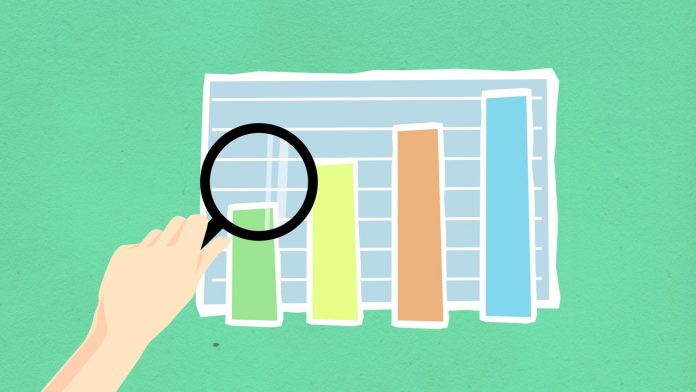Market research is a core component of business growth. We all know that running your own business comes with some risks, but whether you’re trying to expand your target audience, working to enhance customer experience, or you’re promoting a new product, market research allows you to calculate these risks so you can use your limited resources efficiently.
Consumer behaviour is context-dependent. To boost sales, you need to tailor your product features and advertisement for this context. Companies use the best market research reports to gain insight into current market trends, market size, target audience and competitors so they can develop strategies on how to use these factors in their favour.
This article will explore the fundamental aspects of market research and how to use it to maximise business success.
What is Market Research?
Market research is used to evaluate the viability of new business opportunities. It can be defined as a process that involves collecting data about your target demographic, buyer persona, niche and current market trends to assess the demand for products or services. The next step is to analyse the data and see if there is sufficient demand to generate profit.
There are two types of market research, depending on the data source: primary and secondary research.
Primary research uses information gathered from online surveys, phone interviews and focus groups. As the name implies, this data is collected directly from representatives of your target audience and used to determine customer preferences and brand awareness. It’s useful when segmenting a company’s market and identifying ideal buyer personas.
The first step consists of exploratory research that’s focused mainly on potential issues with the marketing strategies, and it’s done through an online survey and interviews. The issues identified at this stage are further investigated in the second step that focuses on specific demographic segments.
Secondary research is based on data collected from public and internal records such as market statistics, trend reports and sales data. This type of data is particularly useful when trying to evaluate the competition.
You can use government resources such as statistics or market reports from commercial resources such as research agencies. You’ll also use internal data like the market history of similar products, average revenue per sale and customer retention rates.
What Benefits Does Market Research Provide?
Whenever you want to sell anything, you need to know who is going to want to buy, why, how often and how much they are willing to spend. Consulting companies like Savanta research the answers to these questions to determine what your potential customers need, want and expect from your products or services.
They’ll help you develop your advertising and pricing strategies starting from a detailed profile of your ideal demographic based on factors such as age, gender, location, level of income, lifestyle and personal values.
Another benefit of market research is that it allows you to adapt to an ever-changing world because it keeps you up to speed with market trends. This is vital to business survival and growth. Your competitors do it, and you need to as well. Fortunately, you can also use this to your advantage because you can measure and analyse the results of their marketing efforts to identify gaps and find the most effective strategies.
As we mentioned before, market research can be used to increase the chances of success of a product release. Although no method can guarantee a positive response from customers, you can use it to find out what features matter the most, what advertisement messages resonate best, and the ideal time and place to launch the products.
Lastly, market research helps you identify opportunities for growth. The goal of any company is to expand, but for that, you need to identify viable business opportunities. Market research helps you understand how to sell your products or services to new target audiences. You can use this information to create a solid business plan that minimises losses and boosts profits.
Market Research Mistakes to Avoid
The most common mistake business owners make is assuming they know everything about their industry and customers. If you’ve been running a company for many years, it’s understandable that you think your experience gives you a certain level of expertise, so market research isn’t a necessary expense.
Unfortunately, experience can make us develop preconceived notions and often makes us less adaptable. There’s comfort in familiarity, and we want to keep doing the things we know always worked. However, just because a strategy has worked for decades, it doesn’t make it immune to market disruption. Market research will help you avoid this mistake by giving you up-to-date insight into consumer trends so you can test your assumptions and adjust when needed.
Another common mistake is limiting yourself to secondary research in order to reduce expenses. We’ve explained before that there are two types of market research depending on the source of information. Secondary research uses data from public or commercial resources.
Although secondary research is valuable as a starting point, it can’t replace the clarity provided by the data collected directly from customers. Surveys and interviews may come with an additional cost, but they give you first-hand knowledge of current consumer expectations.
The third mistake we need to mention is neglecting your competitors. We’ve already described how you can use data from competitors’ marketing efforts to create more effective strategies for business growth. Delveinsight offers specialized services to help you analyze this data and apply insights for optimal results. Skipping over this step means losing a chance to learn how you can distinguish yourself and gain a competitive advantage.
Lastly, the biggest mistake you can make when conducting market research is starting the process without a clear understanding of what you’re looking for. Market research is an investment. To make it worth your time and money, you need to first decide on a clear set of objectives. These objectives will determine what methodologies will give you the best results and what questions to ask during primary research.
You can start by writing down some of the questions you would like to ask your customers if given the change. For example, what comes to mind when they see products from your brand or from some of your most important competitors.





































